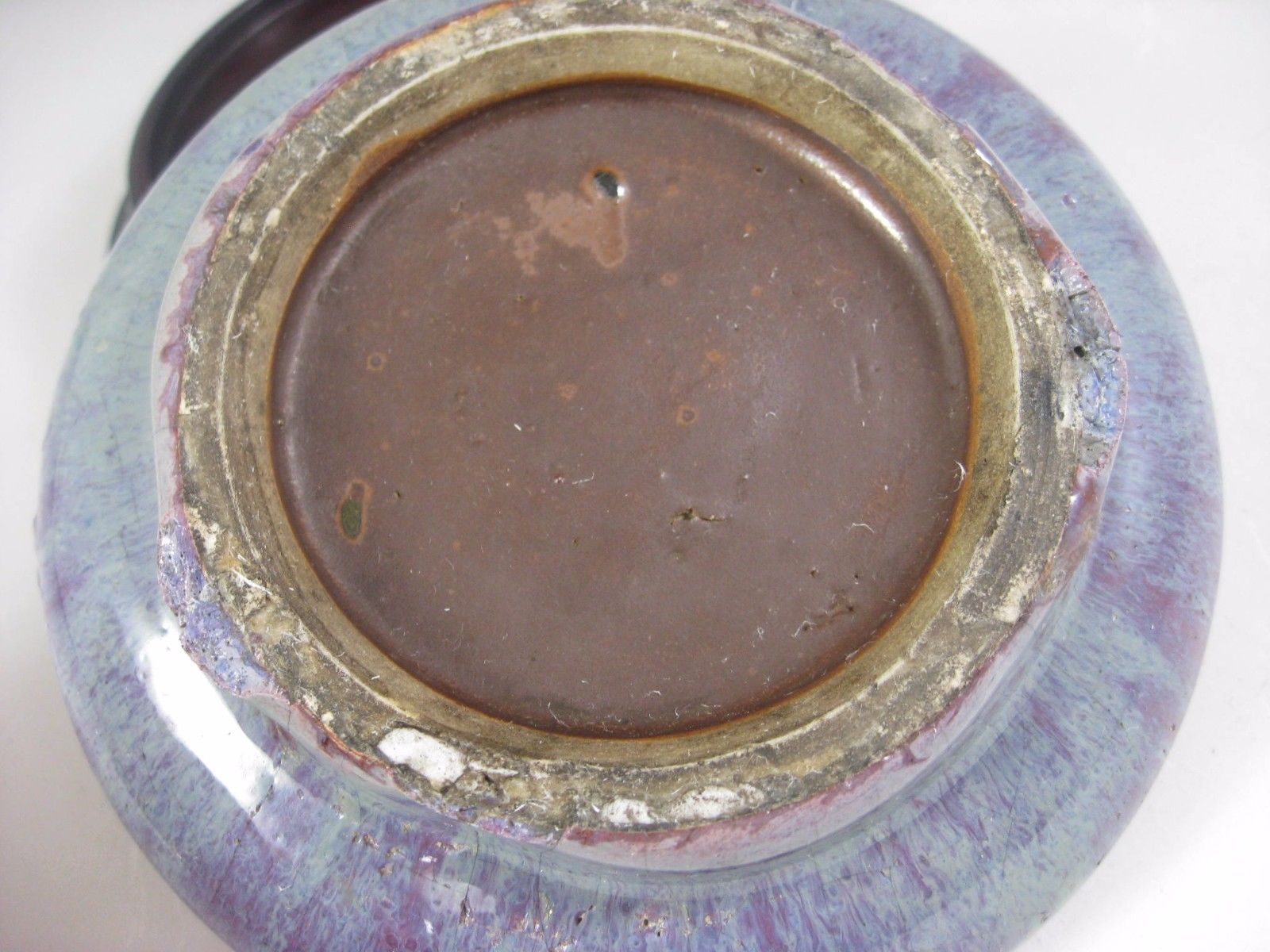Posted By: JLim
Posted Date: Nov 19, 2017 (02:08 AM)
Hi all
For nearly 900 dollars the below pictured object sold on eBay recently. It was advertised as being 18th or 19th century flambe glaze (in effect Qianlong onwards, since that was flambe glazes were first encouraged).
I could not decide whether the object was 18th century, 19th century, or modern. I therefore did not bid on this object. (There is also no way in hell I would have bid so high!)
The following are what I saw as the relevant aspects.
-first, the flambe glaze did not exist before Qianlong's time,
so let's assume it cannot predate Qianlong
-second, the glaze has been crudely split from its sagger at the footrim.
Although this is typical of Tongzhi/Guangxu era red glazes, some sort of overrun is also typical of Qianlong flambe.
But would a Qianlong flambe really be cracked off at the base in such a crude manner?
-third, there is a café au lait brown glaze within the foot. I understand that this is typical of Qianlong; but that it is NOT typical of Guangxu.
There is one image of the base of a red glazed object in Allen's books which has a brown glazed foot, dated Guangxu,
but this is a very different, murkier shade of brown
- on the other hand, the café au lait foot on
this object seems weirdly lifeless compared to
what it should be. It almost looks too matte, and
too even in colour. Qianlong café au lait feet
should look more marbled and translucent. This
makes me think the object is modern.
-the crackling within the glaze, however, looks
convincingly Guangxu-ish, and not modern. Look at
the way bits of glaze from between the crackles
have fallen out - typical of the late 19th
century. Is such crackling also to be found in
Qianlong?
-on the other hand, is the glaze simply too shiny
to be Qianlong? Allen seems to say that shinier
glazes are more likely to be 19th century.
-finally, the footrim of the object. This has a
suspiciously greyed out appearance, as if
artificially dirtied. On the other hand, it might
just be naturally greyish porcelain, which would
make it more likely to be Tongzhi-Guangxu era
porcelain, when greyer bodies were favoured to
show off various monochrome glazes.
Has anyone got an opinion? My recent increase in interest in Chinese monochromes makes me quite fascinated. More pictures to follow shortly.
Kind regards
J.Lim


